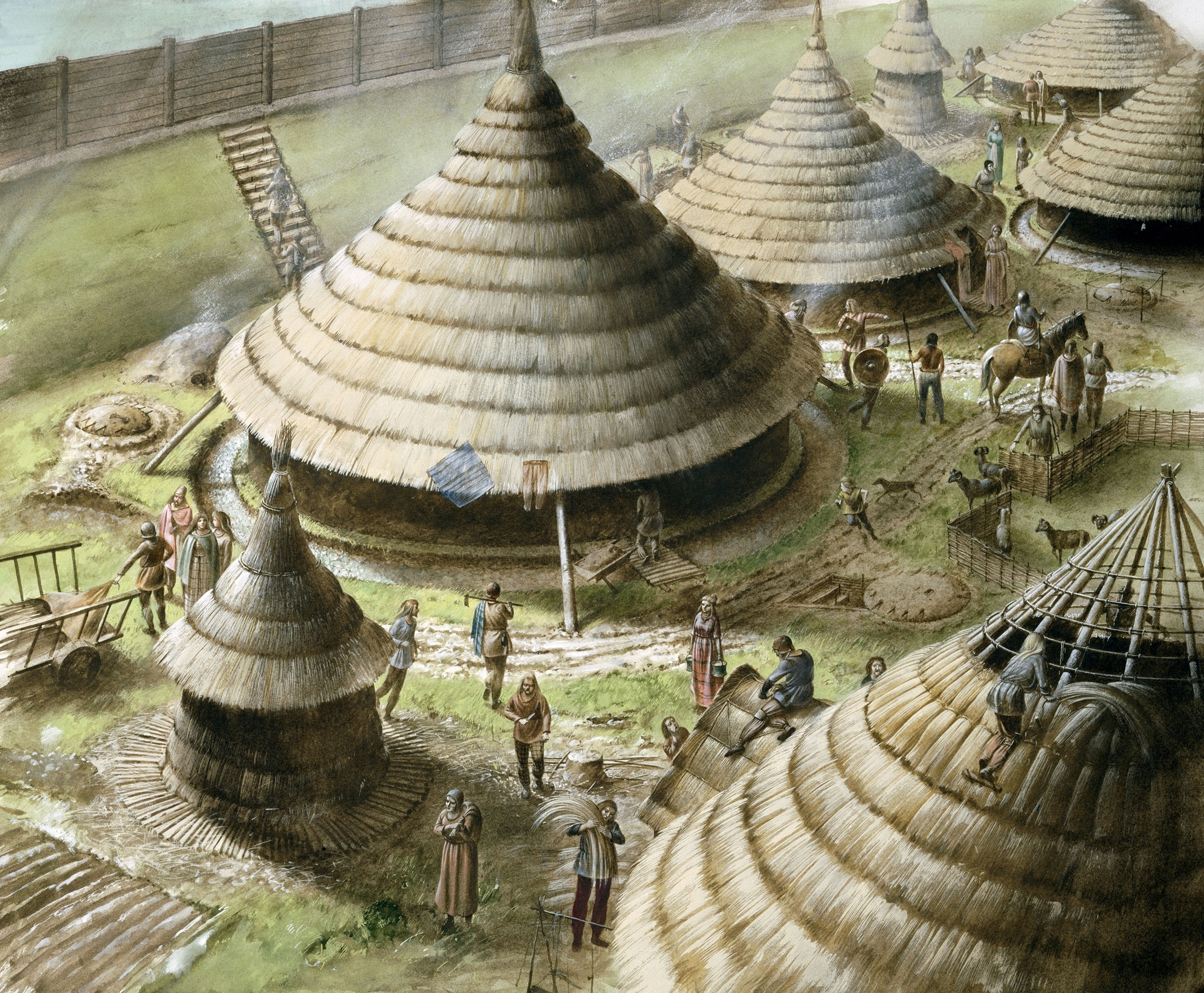Historic England Asks Teachers to Explore Nation's Prehistory With Help of New Resources
- Interactive timeline, brought to life with images of bones and tools, explores Britain’s prehistory
- Latest addition to Historic England's online library of free resources for primary and secondary schools
- Teachers have said they find the subject difficult, not having learned about prehistory themselves
- Historic England reveals its most popular resources for teachers
Historic England has created a new free online resource designed to help teachers explore the story of Britain’s prehistory with their pupils.
Spanning the entire period from the Stone Age to the Iron Age, the interactive timeline gives teachers a vivid visual representation of how Britain’s landscape and inhabitants changed in the 900,000 years from the start of the Palaeolithic era to 43AD.
Interactive Timeline
The timeline features images of the kind of evidence that exists for Britain’s oldest inhabitants: footprints, bones and tools, as well as interactive maps showing important archaeological sites around the country. Through a series of visuals, the timeline illustrates the changing climate and geography of Britain - as it evolved from being a part of the same landmass as France, Germany, the Netherlands and Denmark, to its eventual isolation as an island.
The timeline works well alongside other Historic England online resources, for example the teaching notes, presentations and activities exploring life in Bronze Age Britain through the exciting story of the recent excavation at Must Farm in Cambridgeshire; and a whole range of images for the period featuring archaeological sites around the country, tools and remains and modern reconstructions of homes and settlements.
Our new interactive timeline is a really easy way into learning about prehistory - while still providing high quality, detailed and accurate information for teachers to work from. Teachers have told us that it can be a tricky topic, partly because many of them have not had the opportunity to learn much about the subject before they teach it. Children also often think that prehistory only means the dinosaurs! By bringing all the information together into one place we can help put the period into context for teachers and their pupils - having a dynamic visual prompt of the chronology is a really effective way of doing that.
The tool is the latest addition to the popular library of free resources and teaching aids on HistoricEngland.org.uk/Education. The library includes themed collections of images (including castles, cathedrals, children at work and crime and punishment), as well as ready made presentations and worksheets linked to the curriculum.
Most Popular Downloads from Historic England's Free Resources
All Historic England’s education content has recently been updated and re-presented on its new website. The most popular downloads currently include:
- Saxon England. How did William the Conqueror secure control over Saxon England? Teachers’ notes, Powerpoint and worksheets exploring this pivotal point in England’s history and how the king used castles to dominate his new territory.
- First World War. We Die Like Brothers. A full education resource pack exploring the tragic loss of First World War troopship the SS Mendi, resulting in the deaths of some 650 men, most of them black South Africans. There is a whole range of resources linked to the First World War, including some linked to the centenary. Learn how to survey the condition of a war memorial, shows teachers how to work with their class to survey and record the condition of a local memorial, exploring the lives of those commemorated there. Some schools have even managed to have their local memorial listed at Grade II.
- Local heritage. Planning outstanding local history and heritage projects. This comprehensive guide gives teachers tips and information on how to unlock the potential of the heritage on their doorstep as a way into teaching history at Key Stages 1, 2 and 3. Teachers can also use resources like What was housing like for the Victorian middle classes? as the basis for projects inspired by local streets and buildings. There are tips on identifying different architectural styles as well as teaching ideas, worksheets and collections of images.
- What makes our place special? Our Place is one of the huge range of case studies illustrating the work the Historic England Heritage Schools team does with schools. In this project a group of teachers and children in Bristol worked with the City Council to study the character of the neighbourhood and find out what makes it special. They looked at everything from tree groups and roof lines to views, architectural styles and green spaces. Case studies like these are a great way for schools to find inspiration for the kinds of local heritage projects they can design.
- What sort of toys did my great grandparents play with? Toys and toy shops Archive image, teachers’ notes and Powerpoint, and Key Stage 1 teaching activity to help teachers inspire pupils to think about how children played before digital gaming.
Historic England has also curated around 10,000 archive and modern images specifically for teachers. The collection offers a comprehensive resource teachers can draw on to illustrate almost any topic or geographical region – the most popular images include a 1920s image of the Bryant and May match factory in London (birthplace of the first British trade union for women), a striking image of Victorian foundrymen in Maidenhead, and World War I Land Army girls at work in the fields of Devon.





